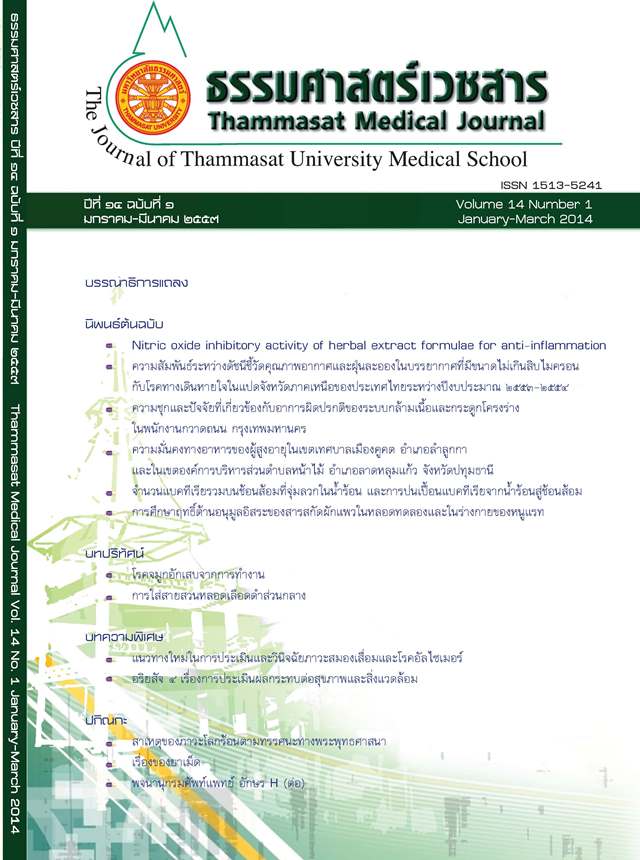Total bacteria numbers on eating utensils dipped in hot water and bacterial contamination from hot water to eating utensils
Keywords:
Dipping eating utensil, Total bacteria, Swab, Food-contact utensil, CanteenAbstract
Introduction: This research was conducted to study water temperature in the cooking-rice pot and in boiling machinefor killing total bacteria on eating utensils. Dipping duration, total bacteria numbers in hot water andbacterial contamination from water to eating utensils were also studied.
Method: The study was performed in Thammasat University, Rangsit campus and Thammasat hospital canteens.Swab method was used following with the pour-plate technique. In case of water contamination, waterwas withdrawn from the pot and the spread-plate technique was applied.
Result: The results showed that water temperature higher than 65 °C could reduce total bacteria numbers oneating utensils to lower than those with no dipping. The longer the dipping duration, the fewer bacteriaon eating utensils were found. However, these happened in case of adding new water to the boilingpot only. In case that water was in use for some period of time, the bacteria numbers in water increasedcontinuously although the water temperature was kept constant at 91-95 °C. Dipping eating utensils intothe contaminated water, bacterial contamination from water to eating utensils was found with higher totalbacteria numbers than those with no dipping. The degree of contamination increased with passing time.
Discussion and Conclusion: Dipping eating utensils into hot water is not the solution for killing bacteria. Moreover, if water in the pot is not changed, more bacterial contamination from hot water to eating utensils was found.
Key words: Dipping eating utensil, Total bacteria, Swab, Food-contact utensil, Canteen


